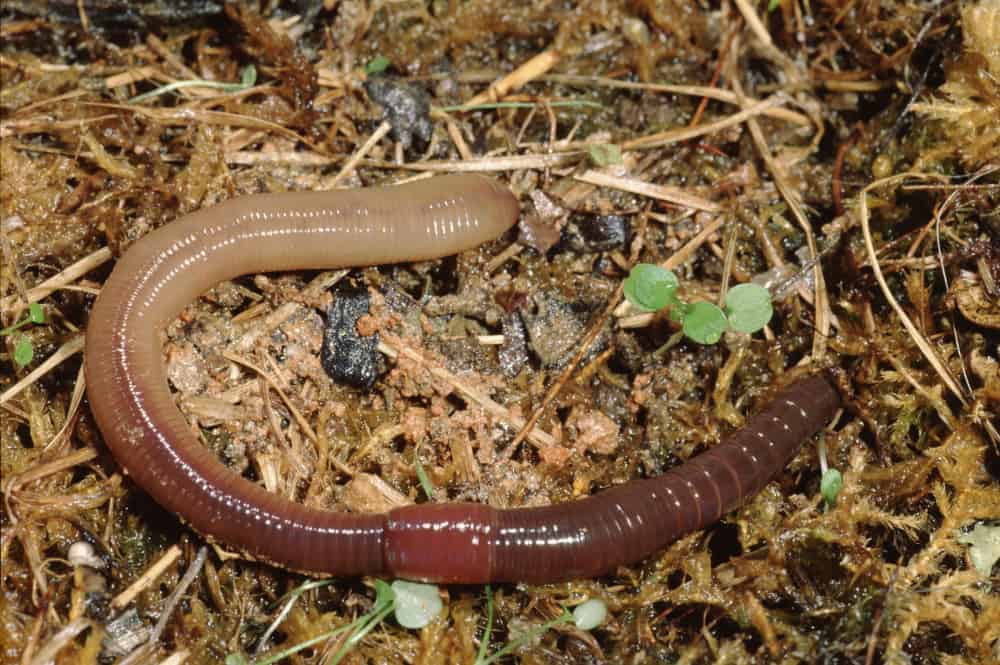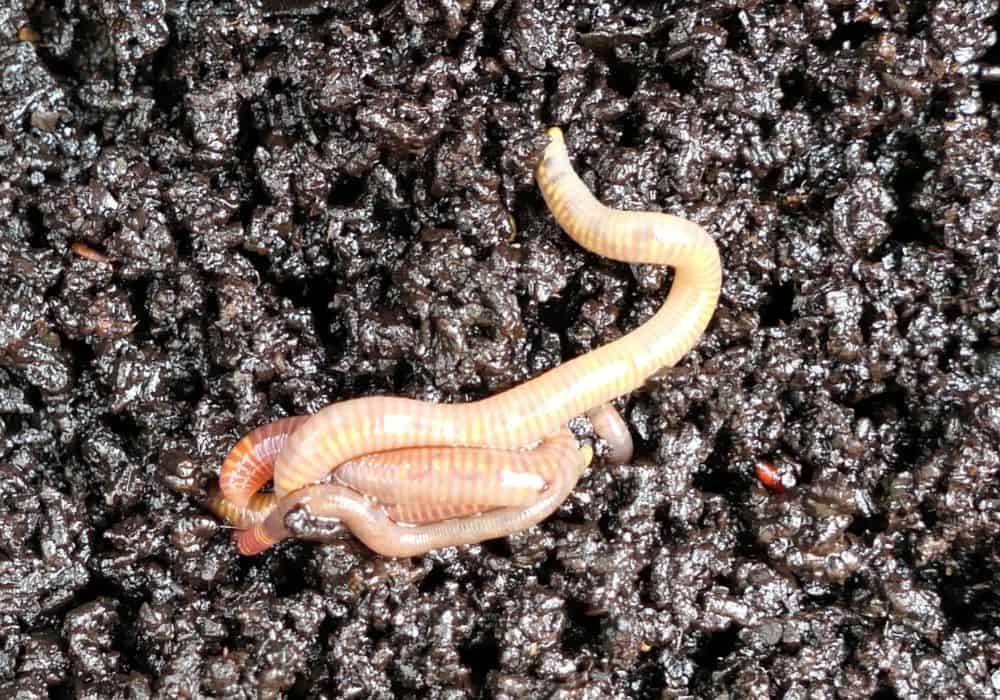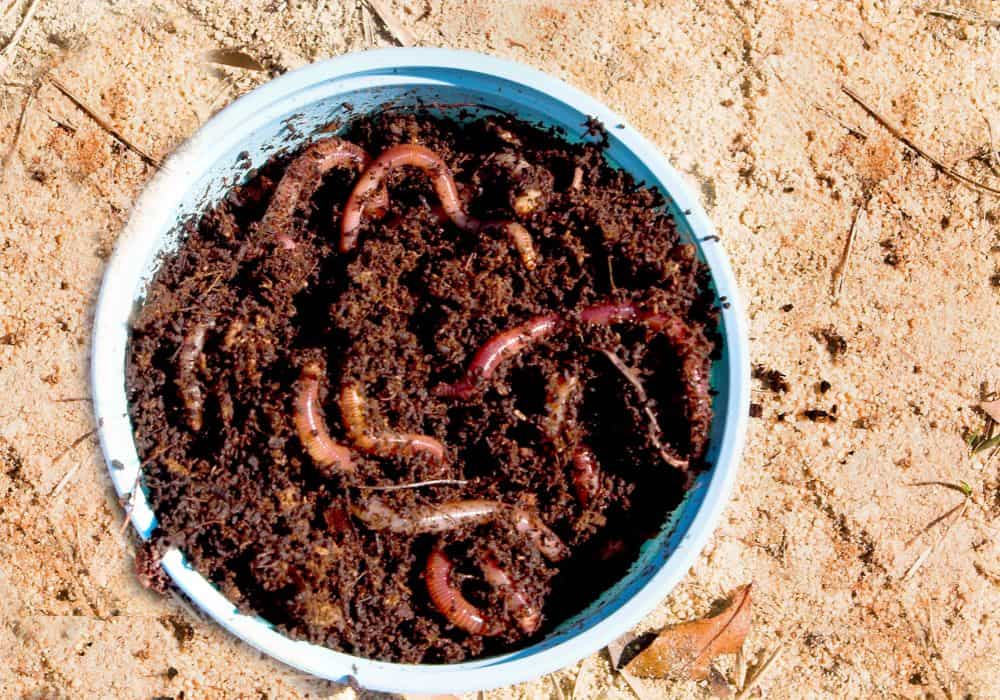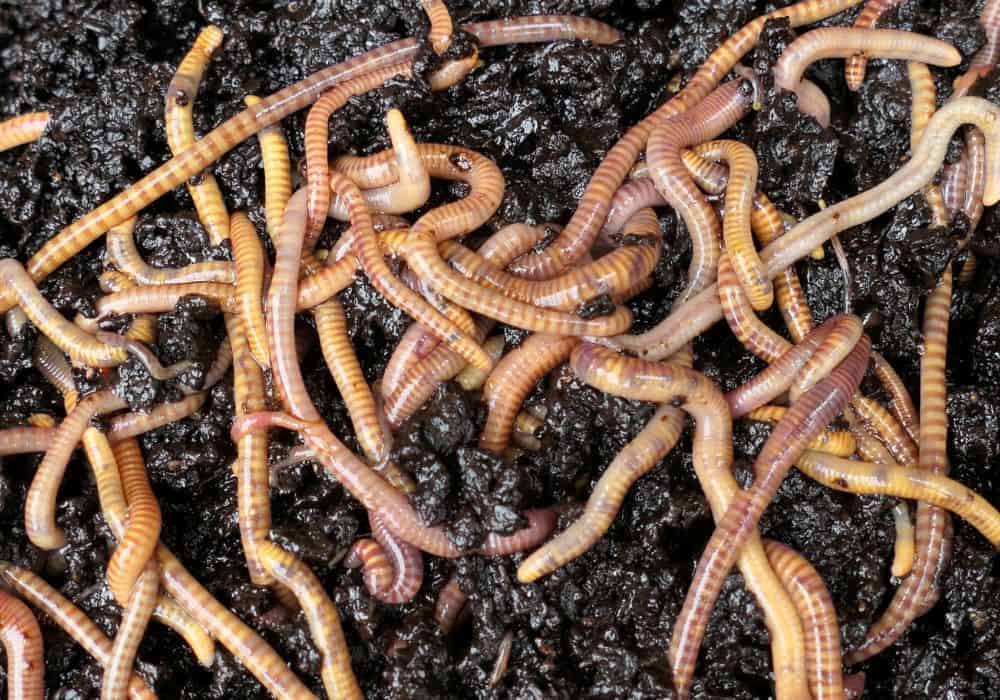Nightcrawlers are long, thin garden worms that live underground. They are often used for fishing because they make excellent bait. Nightcrawlers can be found in many parts of the world and have been used for centuries as a food source for humans and animals alike.
The species is divided into three subgroups and are named after the region they are usually found in. There are European nightcrawlers, Canadian nightcrawlers, and African nightcrawlers.
These worms are also commonly known as red worms, red wigglers, or brandling worms and they are typically found in areas with high moisture levels, such as swamps, marshes, and bogs.
They live in the top 6 to 12 inches of soil and crawl on top of the soil to hunt for food. They are called night crawlers because they usually come out at night, but they can also be found during the day. They feed on decaying plant matter as well as bacteria and fungi.
Nightcrawlers’ bodies and build
Nightcrawlers have a segmented cylindrical body of about 10 inches, but they can grow up to 15 inches long. These animals move using the powerful muscles in their bodies. They’re segmented like other species of earthworms, so they have a soft body with rings around them that protect their organs.
Nightcrawlers have no backbones or jaws. Like most worms, they have two pairs of kidneys, one on each side of the body. They have no lungs but instead breathe through their skin or gills, which cover their entire bodies.
The head
The mouth is located on the underside of the body near the front end, called the head (or prostomium). They have no eyes but do have two large sensory pores just behind their heads that can detect vibrations in soil or water. They use these to find food and mates.
The intestines and hearts
These redworms have a complete digestive system that includes an esophagus, crop, stomach, and intestine. They have a total of three pairs of hearts. One pair of hearts pumps blood into their circulatory systems and another pair pumps blood through their respiratory systems. The third pair pumps blood through their reproductive systems.
The breathing system
Most of them have three sets of external gills that allow them to breathe underwater when they need to do so. The gills also help them absorb oxygen from the water through diffusion as well as from the surrounding air when they are exposed above ground or submerged only partially below it.
Nightcrawler: a good bait by anglers
Nightcrawlers are the most common worms used as fishing bait. They can be purchased at any bait store, and even though they are available year-round, they are most popular in the spring and summer months when fishermen go after bass and other game fish.
Nightcrawlers can be used as bait for many animals
Although they’re often used to catch fish, they can also be used for other purposes such as catching frogs, lizards, and other small reptiles.
Use only fresh nightcrawlers as bait
To keep them fresh, keep them stored in a cool place such as your refrigerator or freezer until you’re ready to use them. You should also replace any worms that die before you get a chance to use them with new ones so that they don’t spoil other baits in the container with their scent when you open it up later on down the road!
Nightcrawlers reproduction
Nightcrawlers are hermaphrodites meaning they contain both male and female sexual organs. This allows them to reproduce at will, by mating with other worms. A common misconception is that nightcrawlers would have the ability to self-fertilize, they actually do not.
Nightcrawlers make cocoons
When mating is over, the worm will produce fluid from its clitellum (the thicker part that looks like a little saddle on the worm) and they will form it into a small cocoon that looks a bit like a lemon.
Fertilized cocoons will take several weeks to hatch
Both male and female cells are injected inside the cocoon, and that package gets buried. They reproduce quickly and a single nightcrawler can produce up to 5 cocoons per week. After a two- to four-week gestation period, the baby worms emerge.
Earthworms versus nightcrawlers
Nightcrawlers are a type of earthworm, but they have some distinct differences. Nightcrawlers are usually larger than other types of earthworms. They also have a thicker body and a wider, flatter head. You can tell the difference between nightcrawlers and other types of earthworms by looking at their coloration.
The different color
Nightcrawlers tend to be brownish-red or red while smaller earthworms are usually more brown or yellow. Nightcrawlers are also very active when they’re on the move, as opposed to small worms which tend to be sluggish.
The different movement
Another difference is how they move. Earthworms move by contracting their muscles and sliding along the surface of the soil. Nightcrawlers can also move this way, but they can also move by wiggling their body from side to side.
The role of nightcrawlers in the environment
Earthworms play a crucial role in the environment. They help to aerate the soil, by digging small tunnels through them like tiny moles. They break down organic matter into very small particles that plants can use as nutrients. and improve the structure of the soil.
Soil drainage and fertility
Furthermore, nightcrawlers improve drainage and fertility of soil because their waste carries important nutrients and minerals from the underground to the surface where they can be readily accessed by plants. In addition to these benefits, earthworms are an important food source for many animals and insects that live in or near soils.
Vermicomposting
Nightcrawlers are a useful addition to any composting system. Their digestive system breaks down organic matter into worm poop that can be easily digested by other organisms, making them an ideal candidate for vermicomposting.
The high populations of nightcrawlers in a healthy compost bin help to break down the organic matter quickly, creating rich, dark humus that can be used as mulch or soil amendment. In addition, the presence of nightcrawlers in a composting system helps to reduce odors and keep the microbial population in balance.
What do nightcrawlers eat?
Nightcrawlers are omnivores
Nightcrawlers feed on decaying organic matter from both plants and fruit or vegetable waste, or even bacteria and fungi, which they ingest with their heavily modified mouths. Even other invertebrates or small dead animals are a treat to these worms.
Although they will eat almost anything they come across, nightcrawlers prefer food that is high in protein, calcium, iron, and vitamin B.
Nightcrawlers have no eyesight or smell but touch
They can be found in the soil, but they prefer moist environments such as compost piles or leaf litter (dead leaves on the ground). As they have no eyes or sense of smell, they rely on touch to find food. They love eating plant matter like grasses and weeds but they also like eating the remains of larger dead animals as well!
Food for captive nightcrawlers
In addition to their natural diet, they will also eat commercial baits such as a pound of cornmeal, grain, or potatoes if you want to feed them in captivity or in a breeding bin. They can also be fed fruit or vegetable scraps, bread, cereal, and other kitchen waste.
You can even make your own worm food, by preparing a mixture of manure, coffee grounds, or mixed leftovers and soil. Those tiny animals can eat up to a third of their body weight per day.
Some foods are dangerous for nightcrawlers
Be careful when feeding your nightcrawlers onions or dairy products. Both of these items will make the worms sick and can even kill them.
How to feed and breed nightcrawlers?
Keep them cool and shaded
Nightcrawlers can be kept in plastic storage containers with holes drilled into them for drainage and ventilation or even a custom-made worm bin. You should keep your nightcrawler’s container in a cool place that is shaded from direct sunlight; keeping them in direct sunlight will cause them to dehydrate quickly.
Simulate their natural habitat
The container should be filled with damp soil that has been dug up from an outside location where nightcrawlers typically live; this will provide your nightcrawler with the environment it needs to thrive inside your home or office.
Use moistened soil
Place your worms on top of moistened soil about 1 inch deep so they have access to the surface where they can burrow down into their burrows when it rains or becomes cold at night (if you keep them outside).
Feed them regularly
Nightcrawlers need to be fed at least once every two weeks during their active season, which is spring and summer. In the fall and winter, nightcrawlers do not hibernate, but they move deeper underground to escape the cold. In that period of time, they do not need as much food, but on a warmer day, they can still come to the surface to feed.
Final Words
In conclusion, nightcrawlers are very useful creatures to have in your garden or to use as composting worms and are excellent bait to use on your fishing trip. They eat a variety of things, depending on their location, from dead plant material to scraps. If you are looking to attract nightcrawlers to your garden, consider adding compost or mulch to the soil. You can also try using bait such as cornmeal or fruit. And you can even breed them at home yourself. They require little upkeep and can even help you reduce your compost heap.



